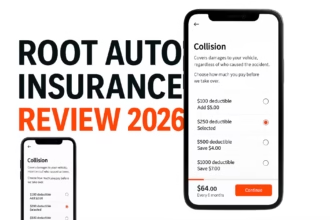Introduction

Gold has long been treasured as a reliable store of value and hedge against uncertainty. With growing concerns over rising inflation, geopolitical tensions, and stock market volatility in 2023, many investors are wondering if gold could offer refuge for their assets in 2024 and beyond. This guide explores both the key upside opportunities and downside risks for gold over the next 12-24 months to help investors make informed decisions about allocating towards this precious metal.
We will analyze gold’s historical performance during similar periods of high inflation, the key demand and supply drivers going forward, where experts see prices heading through 2024, and whether market conditions that typically benefit gold are likely to materialize. We’ll also look at best practices for investing in gold, whether through physical bars and coins, gold mining stocks, ETFs, or other paper vehicles.
Finally, we will conclude with an overall risk-reward assessment and concrete recommendations for portfolio allocations. While gold can undoubtedly be alluring in turbulent times, it is not immune from volatility itself, so proper strategic positions are vital.
Key Questions This Analysis Will Answer:
- How has gold performed historically during high inflationary periods?
- What key demand and supply dynamics will impact gold prices in 2024?
- Where do experts forecast gold prices moving in 2024?
- Will conditions promoting gold benefit materialize in 2024?
- What are best practices for gaining exposure to gold?
- Does gold represent an attractive risk-reward investment in 2024?
READ ALSO: Top Gold Investment Tips for 2024
Historical Performance During High Inflation
First, let’s analyze precedents from past periods of sustained high inflation to gauge how gold typically performs.
In the high inflation decade of the 1970s, gold prices rose over 2,000%, from $43 per ounce in 1970 to $850 at its January 1980 peak. Gold strongly benefits from inflation, as its supply cannot expand rapidly, making it a reliable store of value compared to depreciating currencies.
We saw similar dynamics during other prolonged inflationary eras like the 1930s and 1940s. In the 10 years from 1934 to 1944, industrial commodity prices rose over 40% while gold prices increased over 120% in the same period.
So when inflation genies get out of the bottle, gold has historically served investors quite well by providing high real returns. It makes intuitive sense – with rising prices eroding cash savings, hard assets like gold preserve purchasing power.
This bodes well for gold if inflation remains stickier than central bankers currently expect. Some historical precedent also exists for gold performing well up to two years prior to peak inflation as forward-looking investors spot the trend early.
So while inflation may have peaked in mid-2022, historical patterns suggest strong multi-year runs for gold often happen around inflationary regimes. If inflation proves persistent instead of “transitory”, gold could continue shining.
Key Demand and Supply Drivers
Besides responding to inflation itself, several other key fundamental supply and demand dynamics will impact gold prices in 2024:
- Central bank purchasing and reserves
- Retail investment demand
- Gold mining output changes
- Economic growth in India/China
- Geopolitical conflicts
Central bank gold purchase rates are relevant because the public sector is a major component of overall demand. Central banks globally boosted gold reserves by the second highest level on record in 2022. With risks like debt monetization and currency wars on the horizon, central bank buying could remain strong in 2024.
Additionally, retail and institutional investment demand for gold bars, coins, and exchange-traded funds (ETFs) typically rises when risk perceptions increase. Political tensions, market volatility, and inflation could certainly stimulate further investor inflows to the gold market beyond 2023’s robust pace.
Meanwhile on the supply side, gold mining output posted its first annual decline since 2015 amid cost inflation pressures and labor shortages. These issues may persist, keeping mining production relatively tight vs potential demand growth.
Economic growth rates in India and China also critically influence gold demand as these two Asian giants account for over 50% of global consumer bullion purchases.
Finally, geopolitical “black swan” events often trigger safe-haven gold buying. And 2024 offers no shortage of global flashpoint risks, from Taiwan to Iran to North Korea.
Overall, both fundamental demand and supply forces appear conducive for solid gold pricing in 2024.
Expert Gold Price Forecasts for 2024
Mainstream analysts certainly expect gold markets to remain buoyant over the next 12-24 months:
- Bank of America projects 2024 average prices near $2,000/ounce, a 25% gain from 2022 average levels.
- UBS also forecasts a 2024 average approaching the key $2,000 threshold given inflation/geopolitics.
- Barclays looks for gold to reach $2,100 next year. They see prices peaking around $2,500/ounce by 2025.
- Goldman Sachs estimates 12-month forward (ending 2023) gold prices climbing to $2,150/ounce before plateauing through 2024.
These investment banks see ongoing inflation/volatility and central bank purchases fueling prices higher. Plus they expect China’s reopening to boost consumer gold demand.
The London Bullion Market Association also polls dozens of precious metals analysts on their gold price outlooks semiannually. Their November 2022 survey found the average 2023 forecast near $1,847 with a high estimate of $3,000 per ounce.
That would translate to 12% returns in 2023 by their measure with continued upside in 2024 as geopolitical tensions breed haven demand.
So consensus suggests gold remains in solid uptrends through 2024 with key drivers like unrelenting inflation/volatility and Asian consumer strength underpinning prices.
READ ALSO: Gold Investment Outlook for 2024: Why You Should Invest in Gold
Will Conditions Promoting Gold Prevail in 2024?
For these upbeat projections to pan out requires the persistence of several gold-friendly conditions as 2023 unfolds:
- Embedded inflation continuing globally
- China’s reopening driving commodity/asset appreciation
- An aging US economic expansion nearing its end
- Stock markets facing pressure from QT/rising rates
- Geopolitical crises maintaining anxious investor demand
- Dovish policy pivots reviving inflationary psychology
On the inflation front, despite moderation from 40-year highs, price stability remains distant with core CPI still vastly above the Fed’s goal. Global energy/food shocks also make a swift disinflation path dubious. This bodes quite well for gold’s inflation hedge appeal through 2024.
In China, the abrupt dropping of zero-Covid policies sets the stage for massive 2023 stimulus and infrastructure building to revive the economy after three years of isolation and stagnation. Related commodity/asset Tailwinds could lift gold also as Chinese investors come back to bullion markets after a multi-year lull.
Meanwhile in the US, the 74-month economic expansion is already historically long in the tooth. And aging booms ultimately slide into contraction. While timing the end of the cycle is difficult, 2024 would mark 13 years from the Global Financial Crisis – making at least a mild US recession quite conceivable. Gold tends to perform well early in contractions as a defensive asset.
Additionally, stock markets face trenchant risks from the Fed’s quantitative tightening agenda and monstrous interest expenses for corporations. EPS headwinds, compressed valuations, and intermittent risk-off plunges would favor gold’s counter-cyclical buffer status.
On the geopolitical front, tensions between superpowers promise to ramp up across flashpoints like Taiwan and Ukraine in 2024. Nuclear proliferation threats from Iran and North Korea also loom over markets. During such moments of stark uncertainty, gold glitters.
Finally on policy, the Fed’s desire to pivot towards rate cuts and renewed QE by mid-2024 could light inflationary psychology and debauch currencies – handing gold another catalyst.
In total the macro landscape still looks quite constructive for gold in 2024 even if inflation cools marginally.
Best Practices for Investing in Gold
If building gold exposures make sense for one’s risk-tolerance and investment timeframe given the constructive outlook, what are sound execution methods?
Let’s survey the full menu – from direct physical ownership to more fractional exposure via miners, ETFs and futures:
Physical Bars and Coins
For hardcore believers in catastrophe insurance attributes, holding physical coins and ingots in a home safe, bank vault, or storage facility allows direct ownership and security. The cons are storage costs, liquidity constraints, assay risks on resale, and large transaction requirements ruling out small buys. Recommended only for 10-20% of investable assets for conservative strategic traders.
Gold Miner Stocks
Shares in gold mining firms offer more liquid exposure proportional to gold’s upside with the added leverage of equities. This allows small position sizes. The risks are intensive equity volatility exceeds gold price swings and poor capital allocation by mining executives. Most appropriate for speculative portion of portfolios. Limit total gold stock exposure to 10% of assets concentration maximum due to volatility factors.
Gold ETFs
Funds like GLD, IAU, and SGOL track gold bullion prices directly minus small management fees. This allows easy liquid access in regular brokerage accounts and IRAs with no transaction minimums. Holdings are vault-stored and independently audited for assurance. No concerns on taking delivery. Perfect for 5-20% strategic portfolio buffer positions if avoiding physical ownership.
Gold Futures
For sophisticated traders only, COMEX gold futures and options contracts offer raw price exposure and potential leverage. Beware exponential decay risk in contango curves and extreme volatility. Required expertise puts this domain off limits to casual investors. Strictly refine to seasoned commodity speculators with disciplined risk management and defensive stop losses.
In total this spectrum covers solutions appropriate for investors based on personal preferences, account types, timeline outlooks, and risk constraints. An ideal basket might include physical coins (10%) plus a gold ETF position (10%) for robust direct ownership paired with nimble futures speculation (5%) to juice expected upside in gold’s ongoing bull run through 2024 against inflation and uncertainty.
FAQs – Gold Investment 2024
Besides the core analysis covered above, many common investor questions arise on gold that warrant detailing:
Does gold pay interest or dividends?
No, gold is purely a speculative capital asset play. No steady income comes from holding physical gold or derivatives. Its role is inflation hedge and crisis insurance to buffer periods of market drawdowns. Investors solely profit through eventual appreciation on gold holdings.
How liquid is gold if I need sudden cash access?
Physical gold can be cumbersome to liquidate rapidly for cash without transaction/shipping delays, inventory gaps from buyers, and spread losses. Dealers typically pay 4-5% under spot price. Some websites offer quicker buyback but at wider discounts. Meanwhile futures markets and ETFs offer seamless liquidations enabling gold to cash in under 48 hours. Overall gold liquidity decent relative to other assets if accessing through financial products rather than physical coins and bars.
Do its high costs outweigh gold’s upside potential?
While exchange costs, spreads, storage fees, assay charges, and shipping premiums burden buyers, they are small relative to gold’s eventual value appreciation during bull markets and crisis spikes. These “roundturn transaction costs” still equate to far less than income taxes, capital gain taxes, investment management expense ratios, and account administration fees incurred in standard securities over equivalent multi-year holding periods. Gold costs prove modest for most investors and handlers absorb much friction.
Could rising rates collapse gold like previous cycles?
Gold initially softened in early 2022 as markets anticipated hawkish Fed tightening. But it ultimately rallied powerfully for the year as a whole despite the most aggressive Fed tightening since the 1980s. This shows the precious metal has forged resilience this cycle compared to much weaker performance in 2013’s taper tantrum. This resilience likely owes to far larger inflation risks now with structurally embedded price increases compared to purely monetary policy threats last decade. In total gold looks much sturdier in this hiking cycle driven by actual entrenched inflation rather than simply a policy response alone to speculative excesses.
Gold Investment Risk/Reward Analysis for 2024
After assessing historical precedent, market fundamentals, expert projections, macro conditions, and execution methods–does gold offer an attractive risk-reward asymmetry for 2024?
In my assessment, gold still carries elevated tail risks from two primary vectors that warrant consideration:
- Swift Inflation Reduction – Markets myopically assume central bank tightening will permanently crush inflation tensions. But as 1970s stagflation illustrated, inflation can persist even under aggressive rate hikes if supply-side shocks and psychology enable embedded price increases. Regardless the risks of a Volcker-esque policy response permanently eradicating inflation leaves gold vulnerable to disinflation headwinds.
- China Stimulus Effects – China’s demand impact on gold represents a great swing factor. After weak gold imports for years amidst zero-Covid policies, economists expect surging Chinese buying from pent-up infrastructure stimulus and higher incomes. But disappointing economic support could mute this bullish catalyst.
Beyond these considerations, gold’s path of least resistance trends higher given still massive inflation overhangs globally and countless geopolitical flashpoint risks on the radar for 2024.
The Fed also feels immense pressure to pivot towards accommodation by mid-2024. This policy capitulation would likely ignite inflationary psychology and gold buying tailwinds against declining real rates.
All considered, this leaves gold with asymmetrical upside/downside skew for continued gains through 2024. The precious metal can absorb near-term volatility around these risks and the long-term macro tailwinds still outweigh any transitory drawdowns.
Upside potential also runs higher with miners and futures for aggressive traders while physical/ETFs provide safer leverage. Hence our prior guidance on portfolio construction methods and position sizing.
Conclusion and Recommendations
Gold’s prospects entering 2024 remain favorable overall despite intermittent threats from central bank outcomes and China demand variables. The macro environment still tilts inflationary while geopolitics breeds uncertainty and volatility. Both forces catalyze institutional and retail demand for reliable crisis hedge assets like gold.
This makes large corrections unlikely absent some global growth miracle or mass coordinated policy triumph over inflation–two improbable scenarios given embedded inflation, astronomical debt levels, and unavoidable demographics.
As such our guidance calls for 15-25% total portfolio exposure in gold instruments including:
- 10% physical coins/bars
- 10% gold miners
- 5% gold futures
OR
- 10% physical for conservative investors
- 15% gold ETFs for IRAs/401ks
Such allocations help meaningfully hedge inflation risks and buffer portfolio losses during periods of intermittent volatility or broader market declines – both probable outcomes in 2023-2024 unfortunately.
Yet gold also promises participation in rising asset/commodity prices from demand spikes rather than pure protection alone. This interesting asymmetry makes it particularly attractive at this stage of the global economy and policy cycle heading into 2024.
In closing, while never a panacea, gold deserves fresh attention and allocation from investors across the risk spectrum given current macro conditions. We stand at a particular juncture where gold diversification could alleviate portfolio pressures and even enhance performance as markets grow more inflationary and unstable.
In another related article, Is Now a Good Time to Invest in Physical Gold for 2024?





